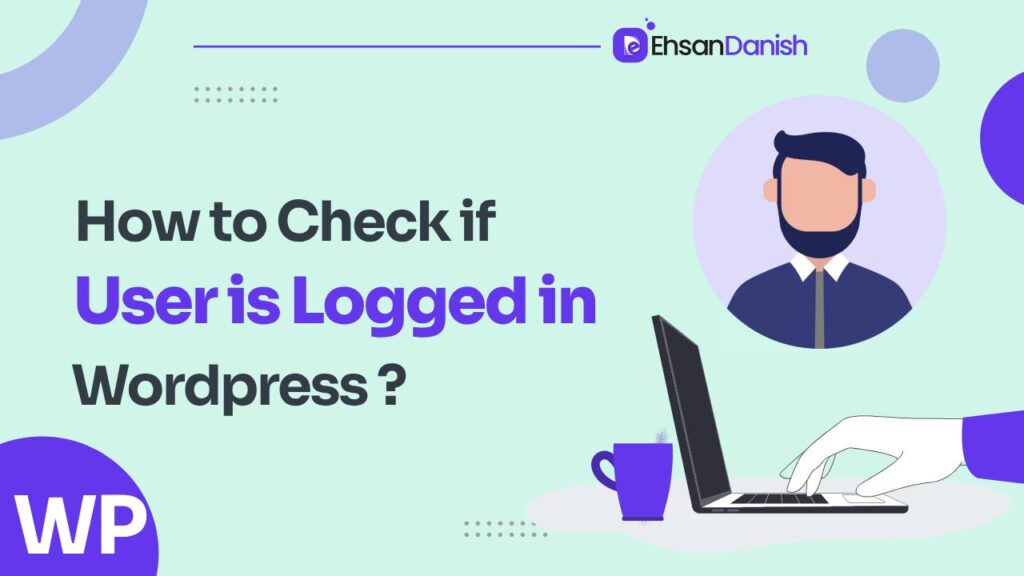User authentication plays a pivotal role in shaping the user experience on a WordPress website. Whether you’re a seasoned developer or a beginner, understanding how to check if a user is logged in or not is essential. In this guide, we will explore various methods and functions that WordPress offers for determining user login status, along with their practical applications. Let’s learn “How to Check if User is Logged In WordPress”.
Understanding User Roles in WordPress
Default User Roles
WordPress comes with a set of default user roles, each with its own set of capabilities:
- Administrator: Full access to all site settings and content.
- Editor: Can manage and publish posts, including those of other users.
- Author: Can publish and manage their own posts.
- Contributor: Can write and manage their own posts but cannot publish them.
- Subscriber: Can only manage their own profile.
Custom User Roles
In addition to default roles, you can create custom roles to fit your site’s specific needs. This can be done using plugins or custom code.
Why Check If a User is Logged In?
Security Reasons: Checking if a user is logged in helps protect sensitive content and ensures that only authorized users can access certain areas of your site.
Custom Content Display: You can show or hide specific content based on the user’s login status. For example, you might want to display a special offer to logged-in users only.
Personalized User Experience: By knowing whether a user is logged in, you can personalize their experience, such as greeting them by name or showing their profile picture.
How to Check if User is Logged In WordPress
WordPress provides an intuitive way to check if a user is logged in using the is_user_logged_in() function. This function returns a boolean value, allowing you to conditionally display content based on the user’s authentication status. Here’s how you can use it:
if ( is_user_logged_in() ) {
// your code for logged in user
} else {
// your code for logged out user }
WordPress Check if User is Not Logged In
To check if a user is not logged in, you can simply invert the condition using the ! (not) operator:
if ( !is_user_logged_in() ) {
// your code for non logged in user
} else {
// your code for logged in user }
What is the Use of “is_user_logged_in()” Function in WordPress
The is_user_logged_in() function serves as a fundamental tool for enhancing the dynamic behavior of your WordPress site. It empowers you to tailor the user experience by showing or hiding content, redirecting users, or providing custom messages based on their login status. Whether you’re building a membership site, an e-commerce platform, or a personalized blog, this function is your gateway to creating user-specific interactions.
What are the Other Available Useful Functions?
While is_user_logged_in() is a versatile function, there are other functions that can also be immensely useful:
get_current_user_id(): This function retrieves the ID of the currently logged-in user, allowing you to perform personalized actions or fetch user-specific data.wp_get_current_user(): It returns a WP_User object that contains various user data, such as username, email, and roles. This function is especially helpful when you need detailed user information.current_user_can($capability): With this function, you can check if the current user has a specific capability, such as editing posts or managing options.wp_login_url($redirect): When generating login URLs, this function ensures proper redirection after a successful login. It’s useful for creating custom login links in your theme or plugin.wp_logout_url($redirect): Similarly, this function generates logout URLs with appropriate redirection, ensuring a smooth user experience.
Conclusion
Mastering the art of checking user login status in WordPress is a valuable skill that can significantly impact user engagement and interaction on your website. By using functions like is_user_logged_in() and exploring other related functions, you can seamlessly control content visibility, personalize user experiences, and provide tailored interactions. Whether you’re a developer, designer, or site owner, this guide equips you with the knowledge to enhance your WordPress site’s functionality and user satisfaction.
Additional Reading:
How to Fix WordPress Not Sending Email Issue?
How to Switch from Wix to WordPress?
Frequently Asked Questions
What is the purpose of checking user login status in WordPress?
Checking user login status in WordPress is essential for tailoring the user experience. It allows you to display personalized content, restrict access to certain areas, provide custom messages, and create user-specific interactions on your website.
Can I show different content to users who are not logged in?
Yes, you can. By using the is_user_logged_in() function in a conditional statement, you can display different content to users based on their login status. This is particularly useful for encouraging users to log in or sign up.
Are there other useful functions related to user login status in WordPress?
Absolutely. In addition to is_user_logged_in(), WordPress provides several other useful functions:
get_current_user_id(): Retrieves the ID of the currently logged-in user.wp_get_current_user(): Returns a WP_User object with detailed user information.current_user_can($capability): Checks if the current user has a specific capability.wp_login_url($redirect): Generates a login URL with proper redirection.wp_logout_url($redirect): Generates a logout URL with appropriate redirection.
Can I create custom messages for logged-in and non-logged-in users?
Yes, you can customize messages based on the user’s login status using conditional statements. For example, you can greet logged-in users with a personalized message while encouraging non-logged-in users to register or log in.
How can I use these functions in my theme or plugin?
You can use these functions by embedding them within PHP code in your theme’s template files or in your custom plugin files. This enables you to control content visibility and interactions throughout your website.
Is it possible to redirect users based on their login status?
Absolutely. By combining the functions mentioned above with appropriate redirect URLs, you can guide users to specific pages upon login or logout. This is often used to create seamless navigation experiences.
Can I protect specific content so only logged-in users can access it?
Yes, you can. By wrapping content within conditional statements that check if a user is logged in, you can restrict access to certain parts of your website, making them accessible only to registered users.
Are these functions applicable to both frontend and backend development?
Yes, these functions can be used in both frontend and backend development. Whether you’re modifying how content is displayed on the website itself or controlling access within the WordPress admin panel, these functions are versatile tools.
Are there plugins available to simplify user login status management?
Yes, there are plugins available that provide additional features and customization options related to user login status. However, with the built-in functions and techniques mentioned, you can achieve the desired outcomes without relying on additional plugins.


